Toledo, OH Pollen and Allergy Report for Summer 2023
Pollen Allergy Trends in Toledo, OH
When is pollen lowest in Toledo, OH?

February
Lowest month total PPM
Avg. PPM
When is pollen highest in Toledo, OH?

April
Highest month total PPM
Avg. PPM
How does pollen in Toledo, OH compare to Ohio?
Toledo has a higher average PPM than the state of Ohio.
Toledo yearly avg PPM:
Ohio yearly avg PPM:
How does pollen in Toledo, OH compare to the USA?
Toledo has a lower average PPM than the USA.
Toledo yearly avg PPM:
USA yearly avg PPM:
Is pollen worse this year in Toledo, OH?
Spring 2023 was worse than spring 2022.
Spring 2023 PPM:
Spring 2022 PPM:
Average PPM in Toledo, OH
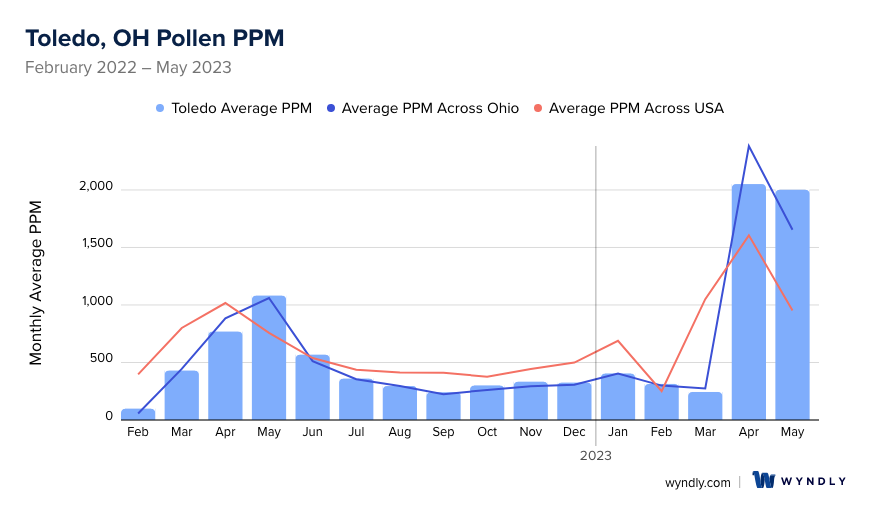
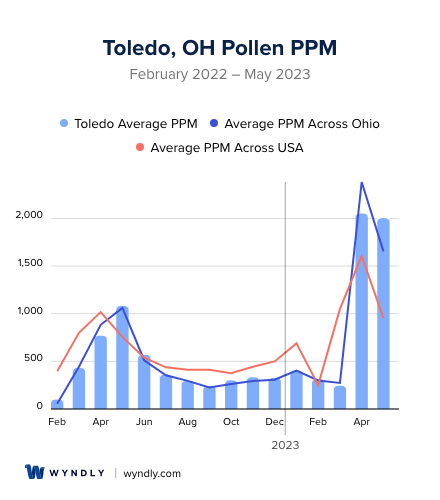
Toledo, OH Pollen and Allergy Breakdown by Month
Grass
When is grass pollen highest in Toledo, OH?
April has the highest grass pollen in Toledo, OH with an average PPM of
When is grass pollen lowest in Toledo, OH?
October has the lowest grass pollen in Toledo, OH with an average PPM of
Tree
When is tree pollen highest in Toledo, OH?
April has the highest tree pollen in Toledo, OH with an average PPM of
When is tree pollen lowest in Toledo, OH?
July has the lowest tree pollen in Toledo, OH with an average PPM of
Weed
When is weed pollen highest in Toledo, OH?
April has the highest weed pollen in Toledo, OH with an average PPM of
When is weed pollen lowest in Toledo, OH?
February has the lowest weed pollen in Toledo, OH with an average PPM of
Toledo, OH Pollen Monthly Breakdown by Pollen Type
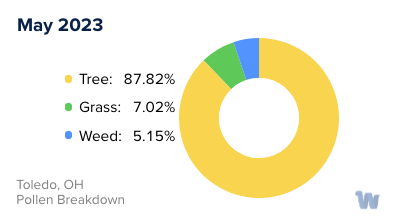
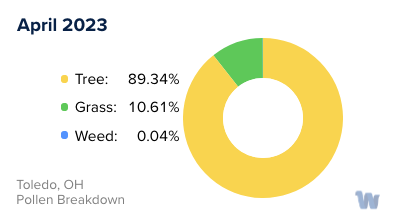

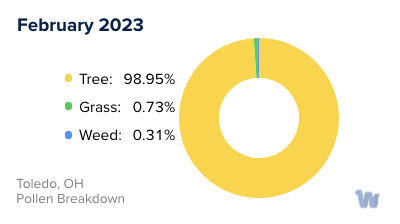

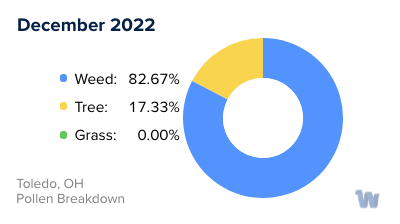

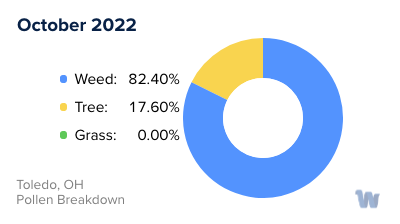
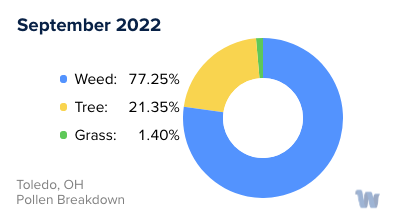



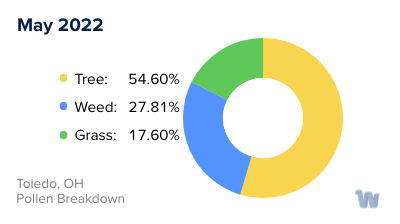

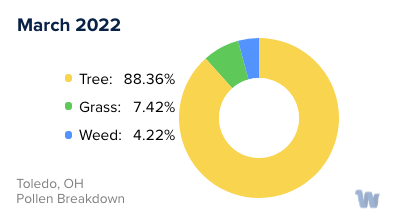
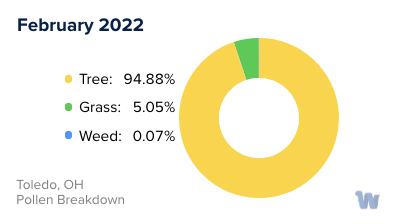
Pollen and Hay Fever in Toledo, OH
Pollen allergies, often referred to as hay fever, are a common concern for the residents of Toledo, Ohio. This condition is typically characterized by symptoms such as sneezing, a runny or stuffy nose, itchy or watery eyes, and an itchy throat or ears.
In Toledo, there are three main types of pollen that can trigger allergies: tree pollen, grass pollen, and weed pollen. Each of these has its own 'peak' season, during which the pollen count tends to be particularly high.
Tree pollen is most prevalent in the spring, with oak, maple, and birch being some of the most common culprits. These trees release small, light, dry pollen grains that can be carried by the wind for miles, making it easy for them to find their way into homes and noses.
Grass pollen follows close behind, with its peak season typically occurring in late spring and early summer. Common types of grasses that produce allergy-triggering pollen in Toledo include timothy, Kentucky bluegrass, and ryegrass.
Finally, weed pollen tends to be most problematic in the late summer and fall. The biggest offender is typically ragweed, a plant that thrives in the climate of Ohio and can produce up to a billion pollen grains per plant in a single day. Other weeds such as pigweed and lamb’s quarters also contribute to the pollen count.
Understanding the types of pollen and their seasons can help those with pollen allergies anticipate and prepare for the times of year when their symptoms may be most severe. Please note that this general guide may not account for yearly variations in weather, which can affect pollen levels and seasons.

